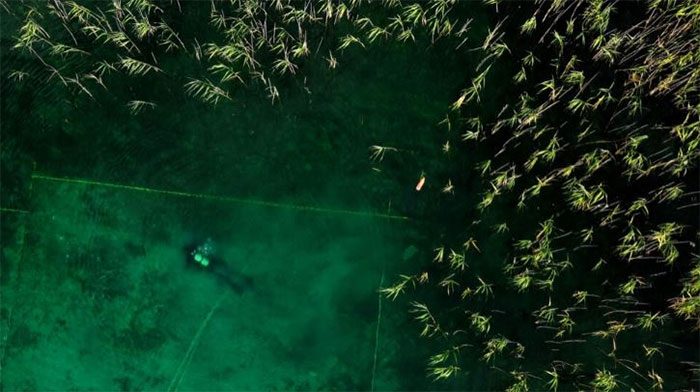Archaeologists believe that the shores of Lake Ohrid in Albania were chosen as a settlement site by a community living in stilt houses around 8,000 years ago.
Under the emerald waters of Lake Ohrid, often referred to as the “Jewel of the Balkans,” scientists have discovered remnants of what is believed to be the oldest settlement in Europe.
Researchers are working to unravel the mysteries surrounding the lifestyle of this ancient community.
Archaeologists believe that the shores of Lake Ohrid in Albania were inhabited by a community in stilt houses approximately 8,000 years ago. This means it is the oldest lakeside village discovered in Europe to date.

Lake Ohrid. (Source: AFP).
Radiocarbon analysis at this site indicates that the community existed around 6,000 to 5,800 years BC.
Professor of archaeology Albert Hafner from the University of Bern, Switzerland, stated that according to research findings, this ancient community may have existed hundreds of years before the oldest lakeside community previously discovered in the Mediterranean region and areas near the Alps.
Similar ancient villages have been discovered near the Alps in Italy, dating back to around 5,000 BC.
Professor Hafner and his team, which includes Swiss and Albanian archaeologists, have excavated several sites along the shores of Lake Ohrid in Albania, spanning the mountainous border region between North Macedonia and Albania.
This settlement area is believed to have housed between 200 to 500 people, with homes constructed in the style of stilt houses on the lake or in areas that were prone to flooding when water levels rose.
The excavations have also revealed intriguing mysteries. During some recent exploratory dives, archaeologists uncovered evidence indicating that the community here was fortified with thousands of planks embedded with sharp stakes, possibly used for defense.
According to the research team, an estimated 100,000 spike-embedded planks were dropped into the lakebed, and to defend themselves in this manner, the inhabitants had to cut down forest trees. Archaeologists are still investigating the purpose behind these defensive barriers. Professor Hafner considers this discovery to be “a treasure.”
Lake Ohrid is one of the oldest lakes in the world, believed to have existed for over one million years. With the assistance of professional divers, archaeologists have collected numerous pieces of petrified wood and valuable oak fragments.
According to archaeologist Adrian Anastasi, analyzing the vegetation has helped the research team gain a better understanding of the daily lives of this ancient community, providing valuable insights into the climate and environment of that era.
To avoid damaging the archaeological site, the research team has conducted activities meticulously and carefully.
Currently, scientists believe that the people of this community relied on agriculture and livestock farming to meet their food needs.
The research team has found fossils of seeds, plants, and bones from various wild and domesticated animals.
However, the team believes that it will take approximately 20 years of research to fully understand and draw accurate conclusions about this ancient community.


















































